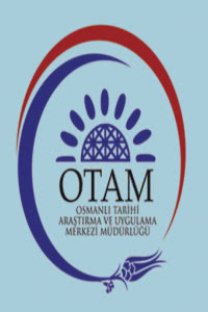Circassian colonization in the danube Vilayet and social integration (preliminary notes)
Tuna Vilayeti’ndeki çerkes kolonizasyonu ve sosyal bütünleşme (başlangıç notları)
___
BLIEV, Mark, Cherkesiya i Cherkesy XIX veka. Kratkiy ocherk istorii [Circassia and Circassians in 19th Century. A Comprehensive History], Moscow 2011.BOBROVNĐKOV, Vladimir, “Rossiyskie musulmany posle archivny revolyutzii: vzglyad s Kavkaza i iz Bolgarii” [Russian Muslims: Some notes on the Archives and Primary Sources in Caucasus and Bulgaria after 1989-1991], Ab Imperio, 4 (2008).
CHOCHĐEV, Georgi , “Some Aspects of Social Adaptation of the North Caucasian Immigrants in the Ottoman Empire in the Second Half of the XIXth Century”, downloaded from the web site: www.aheku.org/datas/users/1- g_chochiev_immigrants_applications.pdf.
CHOCHIEV, Georgi-Bekir Koç, “Some Notes on the Settlement of Northern Caucasians in Eastern Anatolia and Their Adaptation Problems (the Second Half of the XIXth Century – the Beginning of the XXth Century)”, Journal of Asian History, 40 (2006), 1.
DOREV, Pancho, Dokumenti za balgarskata istoriya [Archival Sources about Bulgarian History], vol. 3, Sofia 1940.
DRAGANOVA, Slavka, Bekovskoto selo v navecherieto na Osvobojdenieto (statistichesko izsledvane spored osmanski danachni registri) [The Villages in the kaza of Berkofča on the eve of Russo-Ottoman War of 1877/78 in the light of Ottoman tax registers], Sofia 1985.
DRAGANOVA, Slavka, Kolichestven analiz na ovcevadstvoto v balgarskite zemi pod osmanska vlast ot sredata na XIX vek do Osvobojdenieto [Sheep Breeding in the Danube Vilayet, 1860s-1870s], Sofia 1993.
EPIFANTZEV, Andrey, “Prichiny porajeniya adygov v Kavkazkoy voyne” [On the Reasons for the Circassians’ defeat in the Caucasian War], downloaded from the web site: www.apn.ru/publications/article21543.html.
EPIFANTZEV, Andrey, Kavkazskaya voyna, Genotzid, kotorogo ne bylo, Chast 4: Legendy i mify Kavkazskoy voyny [The Caucasian War and the Claims about Genocide. Part 4: Myths about the Caucasian War], downloaded from the web site: www.apn.ru/publications/article 22049.html.
FISHER, Alan, The Crimean Tatar, Hoover Press Publication, 1978.
HENZE, Paul, “Circassian Resistance to Russia”, The North Caucasus Barrier, Ed.: M. Benningen Broxup, London 1996.
HEYWOOD, C. J., “Medjidiyye”, Encyclopedia of Islam, , vol. 6, Leiden-Brill 2003.
IKONOMOV, Todor, Protokoli na Berlinskiya kongres [Protocols of the Congress of Berlin], Sofia 1885.
ISLA-OWEN, Sarah, The First “Circassian Exodus” to the Ottoman Empire (1858- 1867), and the Ottoman Response, Based on the Accounts of Contemporary British Observers, MA Near and Middle Studies, SOAS, London, 2007, downloaded from the web site: www.circassianworld.com/new/history/war- and-exile/1134-the-first-circassian-exodus.html.
KARPAT, Kemal, “Ottoman Urbanism: The Crimean Emigration to Dobruca and the Founding of Mecidiye, 1856-1878”, Studies on Ottoman Social and Political History, Selected Articles and Essays, Leiden-Brill 2002.
KARPAT, Kemal, “The Status of the Muslims under European Rule: The Eviction and Settlement of the Çerkes”, Studies on Ottoman Social and Political History, Selected Articles and Essays, Leiden-Brill 2002.
KING, Charles, The Ghost of Freedom: A History of the Caucasus, Oxford 2008.
KINYAPINA, Nina,-Mark Bliev, Vladimir Degoev, Kavkaz i Srednaya Aziya vo vneshney politike Rossii. Vtoraya polovina XVIII-80-e gody XIX v. [Russian Inner Affairs, Caucasus and Central Asia from the Second Half of 18th Century to 1880s], Moscow 1984.
KOLARZ, Walter, Russia and her Colonies, North Haven, 1967.
LACHEV, Mitko-Margarita Dobreva, “Uchebnoto delo v grad Lom i Lomsko prez 1874/1875 uchebna godina (spored neizvesten osmanski dokument)” [The schooling in the town of Lom and the kaza of Lom during 1874/1875 school year (in the light of an unpublished Ottoman source)], Studia in Honorem Professoris Verae Mutafčieva, Eds. E. Radušev, Z. Kostova, Sofia 2001.
LIVI, Massimo-Bacci, Population and Nutration. An essay on European demographic History, Cambridge 2008. Mehmed Süreyya, Sicill-i Osmani, C. 4, Istanbul 1996.
MĐTKOV, Todor-Georgi Telkiev, Tzarevictza. Rakovodstvo za krajochnicite po rastenievadstvo [Maize. A Manual for farmers], Sofia 1961.
MUCHĐNOV, Ventzislav, Migratzionna politika na Osmanskata imperiya v balgarskite zemi prez XIX vek (do 1878) [19th-century Ottoman Migration policy and the Bulgarian lands (until 1878)], Sofia 2013.
OVSYANYY, Nikolay, Sbornik materialov po grajdanskomu upravleniju i okkupatzii v Bolgarii v 1877-78-79 g.g., Vypusk 5 [Sources about the Russian Civil Government and Armed Control of Bulgaria in 1877-1879, Part 5], St. Peterburg 1906.
PARVEVA, Stefka, “Agrarian Land and Harvest in South-West Peloponnese in the Early 18th Century”, Village, Town and People in the Ottoman Balkans 16th – 19th Century, Istanbul 2009.
PENCHEV, Pencho-Hristo Krinchev, Elementarni i optimalni potrebnosti ot sredstva za hranitelni produkti [Minimal and optimal nutrition and its cash equivalent], Varna 1968.
PINSON, Marc, “Ottoman Colonization of the Circassians in Rumeli after the Crimean War”, Etudes Balkaniques, 8 (1972), 3.
RADUSHEV, Evgeni, Hristiyanstvo i islyam v Zapadnite Rodopi s dolinata na reka Mesta, XV – 30-te godini na XVIII vek, Chast 1 [Christianity and Islam in the Western Rhodope Mountain and the valley of Mesta river from 15th Century to 1730s Part 1], Sofia 2005.
ROGEN, Eugene, Frontiers of the State in the Late Ottoman Empire, Transjordan, 1850-1921, Cambridge 1999.
RONZIO, Robert, The Encyclopedia of Nutrition and Good Health, New York 2003.
ŞAŞMAZ, Musa, “Immigration and Settlement of Circassians in the Ottoman Empire on British Documents 1857-1864”, Ankara Üniversitesi Osmanlı Tarihi Araştırma ve Uygulama Merkezi Dergisi, sayı 9, Ankara 1998.
SAYDAM, Abdullah, Kırım ve Kafkas Göçleri (1856-1876), Ankara 1997.
SOMEL, Selçuk Akşin, The Modernization of Public Education in the Ottoman Empire 1839-1908, Leiden-Brill 2001.
VOLKOVA, Nataliya, Etnicheskiy sostav naseleniya Severnogo Kavkaza v XVIII – nachale XX veka [Ethnic variety in the Northwest Caucasus from 18th Century to the beginning of 20th Century], Moscow, 1974.
YILDIZ, Berat, Emigrations from the Russian Empire to the Ottoman Empire: An Analysis in the Light of the New Archival Materials, MA at the Department of International Relations Bilkent University, Ankara 2006.
- ISSN: 1019-469X
- Yayın Aralığı: 2
- Başlangıç: 2006
- Yayıncı: Ankara Üniversitesi Osmanlı Tarihi Araştırma ve Uygulama Merkezi
Religious Puritans in Sarajevo in the 18th century
Berlin Antlaşması sonrasında Balkanlar’da Cemaat-i İslamiyelerin Teşekkülü (1878-1918)
Arnavut milliyetçi doktrininde Osmanlı İmparatorluğu’nun ve Avrupa’nın algılanışı
Balkan Savaşları sırasında pomakların zorla tanassur edilmesi (1912-1913)
Yanya Vilayetinin durumuna dair hazırlanan layihalar ve sonuçları
Circassian colonization in the danube Vilayet and social integration (preliminary notes)
